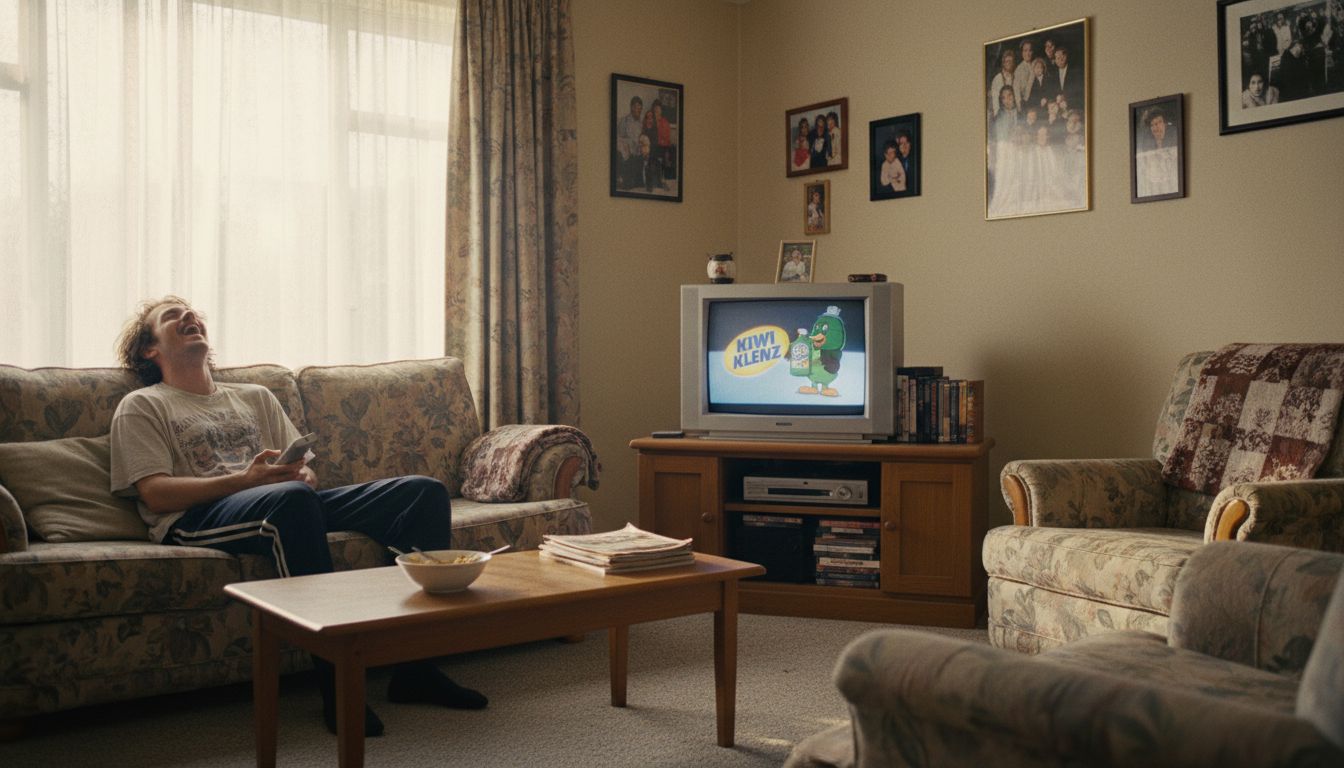The Secret Life of Jingles and Why They Still Slap

Somewhere between the fall of CDs and the rise of TikTok, jingles got quietly shoved into the attic. Brands began chasing sonic logos, ambient playlists, and the sonic equivalent of a lukewarm sigh. But hold on—has anyone actually stopped humming the Mitre 10 'Easy As' tune? Didn't think so.
We like to mock jingles as relics from the golden days of TV ads—cheesy, shouty, and slightly terrifying. But here’s the thing: they worked. Not just in a nostalgia-hit sort of way, but chemically, annoyingly, brilliantly. Catchiness has a job. A good jingle doesn’t just stick, it burrows. It shapes brand memory with the kind of brutal efficiency a planner only dreams of. Jingles weren’t subtle, but they were disciplined. Every beat, every rhyme, crafted to punch through our brains with military precision.
I recently lost two hours in a rabbit hole of Australian and Kiwi road safety jingles from the 90s. There’s a reason we can all recall 'Stayin’ Alive' over chest compressions. A jingle is a form of public service announcement dressed as entertainment. Could anyone tell me what “sonic branding” has accomplished lately besides blending into the Spotify shuffle?
It’s time we look past the polish. Today’s brands are too cool. Everything’s minimal, slick, and forgettable. We’ve sanitised marketing into silence. I say: bring the jingle back. Not ironically. Not as a meme. But as a legitimate, joyous, slightly goofy but completely effective marketing tool. If you want recall, give us melody. Give us rhyme. Hit us with a chorus so sticky, we’re still cursing it in the shower three weeks later. That’s not regression—it’s strategy.
We like to mock jingles as relics from the golden days of TV ads—cheesy, shouty, and slightly terrifying. But here’s the thing: they worked. Not just in a nostalgia-hit sort of way, but chemically, annoyingly, brilliantly. Catchiness has a job. A good jingle doesn’t just stick, it burrows. It shapes brand memory with the kind of brutal efficiency a planner only dreams of. Jingles weren’t subtle, but they were disciplined. Every beat, every rhyme, crafted to punch through our brains with military precision.
I recently lost two hours in a rabbit hole of Australian and Kiwi road safety jingles from the 90s. There’s a reason we can all recall 'Stayin’ Alive' over chest compressions. A jingle is a form of public service announcement dressed as entertainment. Could anyone tell me what “sonic branding” has accomplished lately besides blending into the Spotify shuffle?
It’s time we look past the polish. Today’s brands are too cool. Everything’s minimal, slick, and forgettable. We’ve sanitised marketing into silence. I say: bring the jingle back. Not ironically. Not as a meme. But as a legitimate, joyous, slightly goofy but completely effective marketing tool. If you want recall, give us melody. Give us rhyme. Hit us with a chorus so sticky, we’re still cursing it in the shower three weeks later. That’s not regression—it’s strategy.